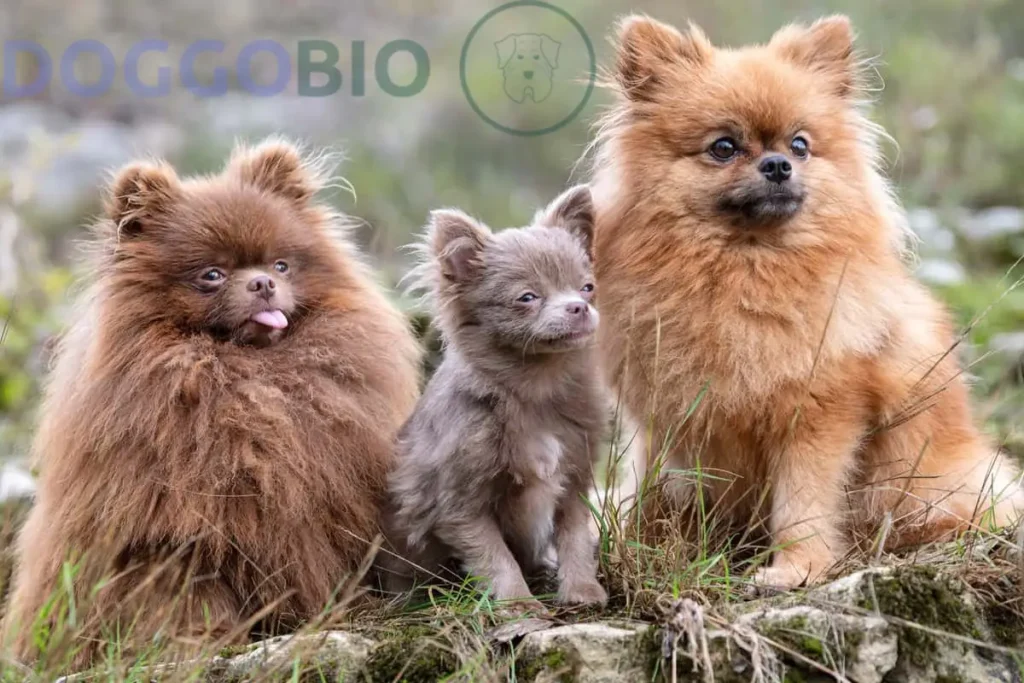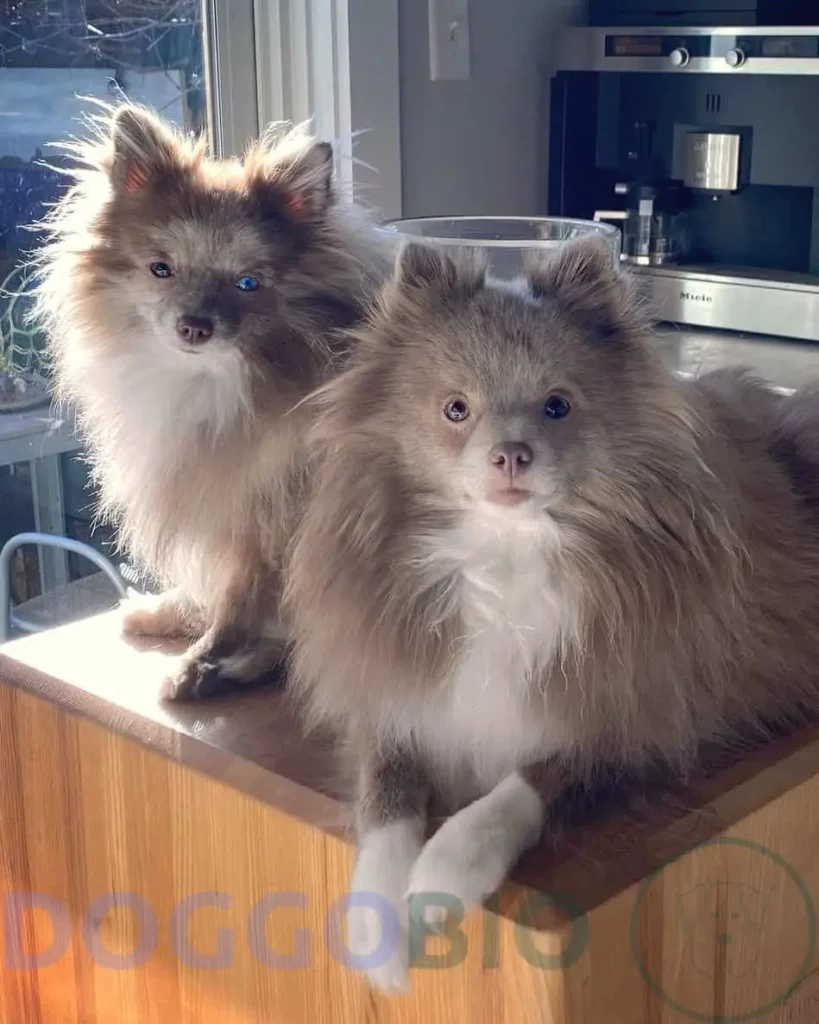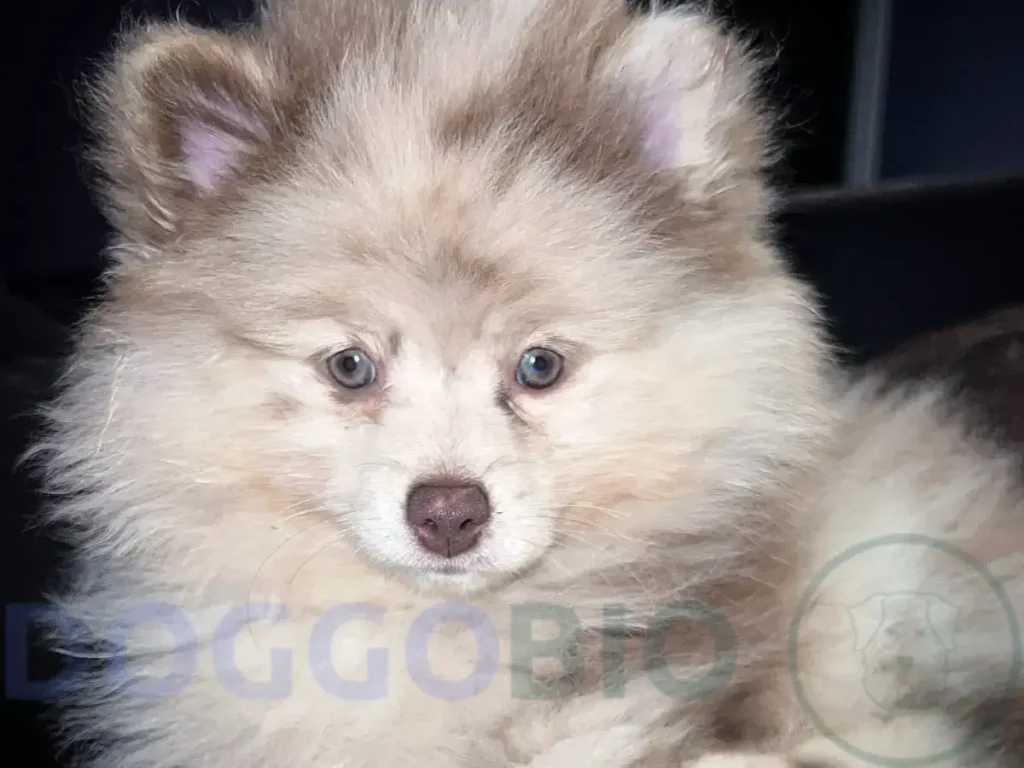Welcome to the enchanting world of canine elegance, where the delicate charm of Lavender meets the captivating allure of the Pomeranian breed. The Lavender Pomeranian emerges as a truly unique and beautiful companion in this delightful realm of fur and finesse.
With its distinctive coat color reminiscent of fragrant lavender fields and its endearing Pomeranian traits, this breed effortlessly captures the hearts of dog enthusiasts and curious onlookers alike.
Join us as we delve into the enchanting characteristics and captivating history that define the Lavender Pomeranian as a remarkable and cherished member of the canine kingdom.
A Brief Overview of Lavender Pomeranian
| Color | Soft, pastel-like lavender hue |
| Genetics | Diluted chocolate coat (combination of chocolate and dilute genes) |
| Rarity | Rare and highly sought-after |
| Cost | Can be quite expensive, often exceeding $4,000 |
| Appearance | Silver-brown or gray with a pinkish chocolate hue, fluffy double coat |
| Size | Small |
| Temperament | Lively, playful, intelligent, loyal, can be vocal |
| Health | Generally healthy, but may be prone to skin conditions and alopecia |
| Care | Regular brushing and professional grooming recommended |
| Lifespan | 12-16 years |
What is Lavender Pomeranian?

A Lavender Pomeranian is a color variant of the Pomeranian breed. Their coat is pinkish-grey, distinguishing them from Chocolate Pomeranians.
The lavender color results from a dilution gene that gives the lavender shade when combined with chocolate. Other names like lilac Pomeranian, Isabella Pomeranian, and lilac Merle Pomeranian are also used.
History of Lavender Pomeranian
Like other Pomeranian colors, the Lavender Pomeranian has its roots in the Pomeranian breed. However, the sources need to detail how and when the lavender color became prominent.
It’s believed that the lavender coloration emerged as breeders experimented with different color combinations, aiming to produce Pomeranians with unique and captivating hues. Over time, the Lavender Pomeranian gained recognition and became a favorite among enthusiasts.
While they might not have a long and storied history like some other Pomeranian colors, they have made their mark recently.
What does a Lavender Pomeranian look like?

Size, height, and Weight
Lavender Pomeranians belong to the toy group, with a height ranging from 6-7 inches and a weight between 3-7 pounds.
Despite their small stature, they are robust and active, often surprising people with their energetic demeanor. Their petite size makes them ideal for apartment living, but they also thrive in homes with yards where they can play.
Coat colors and Types
Their coat is pinkish-grey, solid, or combined with other Pomeranian colors and markings. They have long, double skin that’s plush to the touch.
This coat requires regular grooming to maintain its lustrous appearance. The combination of their unique color with the classic Pomeranian fluffiness makes them a sight to behold.
Temperament and Personality
Lavender Pomeranians are affectionate and crave attention. They are playful, curious, and have sharp watchdog instincts. They are also known to bark loudly if they detect anything unusual.
They are great family pets but require careful handling due to their delicate nature. Their spirited personality, combined with their unique appearance, makes them a joy to have around. They bond closely with their families and often become protective, showcasing a heartwarming loyalty.
Training and Exercise Requirements
Training a Lavender Pomeranian requires patience, as they can be moody and stubborn. However, they are responsive to training. They prefer staying indoors, especially during cold weather. Light strolls or walks to the park are ideal for them.
While they might be small, they are energetic and require regular play sessions to keep them mentally and physically stimulated. Engaging them in interactive games and providing them with toys can also help channel their energy positively.
Grooming and Cleaning
- Their fluffy coats require regular brushing to maintain their appearance.
- To preserve their natural oils, bathing should be limited to once every 3 to 4 months.
- Their teeth should be brushed daily to prevent dental issues.
- Regular grooming sessions keep them looking their best and allow them to check for any health issues.
- Their nails should be trimmed regularly, and their ears checked for any signs of infection.
Food and Diet
Lavender Pomeranians only require small amounts of food. Typically, ¼ to ½ cups of quality dry kibble is sufficient, divided into two meals. Providing them with a balanced diet that meets their nutritional needs is essential.
Given their small size, they can quickly become overweight if overfed, so portion control and regular exercise are crucial.
Life Expectancy and Common Health Issues

1. Epilepsy
Lavender Pomeranians are more susceptible to epilepsy than other breeds. Treatment involves veterinary examination and appropriate therapy. Regular check-ups and awareness of unusual behavior can help early detection and management.
2. Eye problems
They can suffer from cataracts, dry eye, conjunctivitis, and tear duct issues. Regular eye checks and cleaning can help prevent many of these issues.
3. Heartworms
Heartworms are parasitic worms that infest the lungs and arteries. Regular vet check-ups and preventive measures can help keep this at bay.
4. Tracheal collapse
This is a breathing issue where the windpipe collapses, making breathing difficult. It is crucial to be aware of their breathing patterns and seek medical attention if any anomalies are noticed.
5. Patellar luxation
This condition involves the random dislocation of the kneecap from the joint. Regular vet check-ups can help in early detection and management.
How much is a Lavender Pomeranian?
The cost of a Lavender Pomeranian ranges from $2,000 to $3,000, influenced by factors like pedigree, health, and age. Their rarity and unique color make them a premium breed, often fetching higher prices than other Pomeranian colors.
How Can I Find a Lavender Pomeranian For Sale?
Finding a Lavender Pomeranian can be challenging due to its rarity. However, breeders like WolfPacks Pom, Silhouette Pomeranians, and The Poms Simba might have them available.
Rescues such as Pom to the Rescue, Pampered Poms Rescue, and Southern California Pomeranian Rescue are also options. It’s essential to do thorough research and ensure that you’re purchasing from a reputable breeder.
Is this breed the Right Dog for You?
A Lavender Pomeranian might be perfect if you can provide the care they require and are looking for a unique and affectionate pet.
They are ideal for families, singles, and seniors alike. Their small size makes them adaptable to various living situations, but their energetic nature requires regular interaction and stimulation.
Frequently Asked Questions
How was the Pomeranian bred?
A Chocolate Pomeranian is bred with another Pomeranian that carries the dilution gene to produce a Lavender Pomeranian. This means mating a Chocolate Pom with a Blue, Beaver, or another Chocolate Pom. The offspring from such a pairing will most likely have the lavender coat.
Are Lavender Pomeranians Purebred?
Yes.Lavender Pomeranians are purebred dogs. Their unique lavender color results from specific genetics rather than being a product of crossbreeding. This color variation is considered a dilution of the traditional Pomeranian coat colors and is inherited through genetic factors.
Breeders specializing in Lavender Pomeranians work within the breed’s established standards to ensure these dogs maintain their purebred status while showcasing their distinctive coloration.
Does AKC recognize Lavender Pomeranian?
No. The American Kennel Club (AKC) does not officially recognize “lavender” as a standard color for Pomeranians.
However, Pomeranians with lavender-like coat colors can still be registered with the AKC. Still, they would typically be registered under the recognized standard colors like orange, cream, black, ebony, etc. This means that while the AKC doesn’t have a specific category for lavender Pomeranians, they can still be part of the registry under their closest recognized color category. Remember that breed standards and recognition may evolve, so it’s always good to check with the most recent information from the AKC.
Are Lavender Pomeranians Rare?
Yes. Lavender Pomeranians are considered rare within the Pomeranian breed. Their unique and distinct coat color sets them apart from the more common colors like orange, black, and cream. This rarity contributes to their desirability among dog enthusiasts and potential owners.
What Is The Difference Between A Lavender And A Regular Pomeranian?
The primary difference is the coat color. While they share many traits with other Pomeranians, their pinkish-grey hue sets them apart.
How Many Colors Does Pomeranian Have?
The AKC recognizes about 24 different color combinations. This diversity showcases the breed’s versatility and appeal.
Is a Pomeranian Aggressive?
No. Pomeranians are not typically aggressive by nature. These dogs are known for their lively and alert personalities. However, like any dog breed, individual Pomeranians can display aggression if not properly trained, socialized, and cared for.
Aggressive behavior in Pomeranians or any other breed is often a result of factors such as poor training, lack of socialization, fear, anxiety, or other underlying issues. With appropriate training, positive reinforcement, early socialization, and consistent care, Pomeranians are known to be well-behaved and friendly companions. Dog owners must provide a nurturing and supportive environment to help prevent any potential aggressive tendencies from developing.
Is a Pomeranian Easy To Train?
Yes. Pomeranians are generally easy to train due to their intelligence and eagerness to please their owners. Their bright and alert nature lets them grasp commands and tasks relatively quickly. Pomeranians enjoy learning new tricks and commands and respond well to positive reinforcement techniques such as treats, praise, and playtime.
How Long Can a Pomeranian Live?
They have a lifespan of 12 to 16 years. They can lead a long and healthy life with proper care, regular vet check-ups, and a balanced diet.
Do Lavender Pomeranians Shed A Lot?
Yes. Lavender Pomeranians, like other Pomeranian dogs, do shed. They are considered to be medium shedders.
Shedding is a natural process for most dogs, replacing old or damaged hair with new growth. While Pomeranians are not among the heaviest shedders, regular grooming is still necessary to manage their shedding and keep their coats healthy.
Are Lavender Pomeranians hypoallergenic?
No. Lavender Pomeranians are not considered hypoallergenic dogs. Hypoallergenic breeds produce fewer allergens, which can benefit people with allergies. However, Pomeranians shed and produce dander, a common allergen.
What is another name for Lavender Pomeranian?
They are also known as lilac Pomeranian, Isabella Pomeranian, and lilac merle Pomeranian. These names often refer to the same pinkish-grey hue that defines the Lavender Pomeranian.
Conclusion
In conclusion, Lavender Pomeranians bring a charming and unique touch to the world of canine companionship. Beyond their distinct coat color, these little fluffs embody the lively and affectionate nature characteristic of Pomeranians.
Embrace the beauty of diversity in the canine world, and let the enchanting Lavender Pomeranians become cherished members of your family. Open your heart to their unique love, and enjoy the delightful journey of companionship with these special canine companions!

Pingback: Do Pomeranians Shed? Discover Flawless Coat Secrets 2024
Pingback: Are Pomeranians Hypoallergenic? Allergies Beware 2024